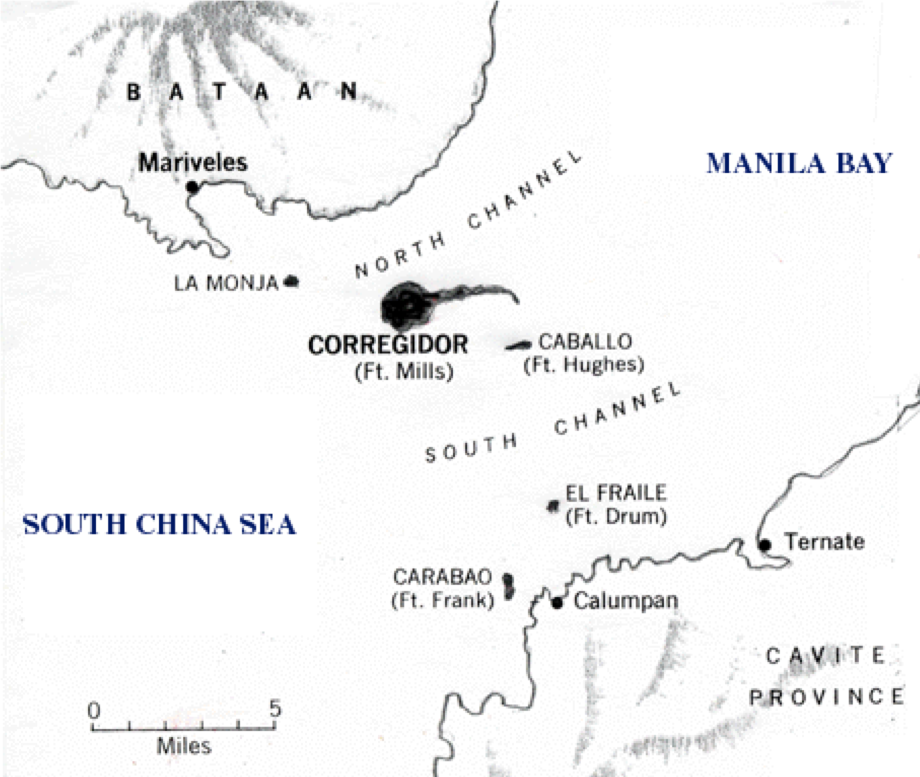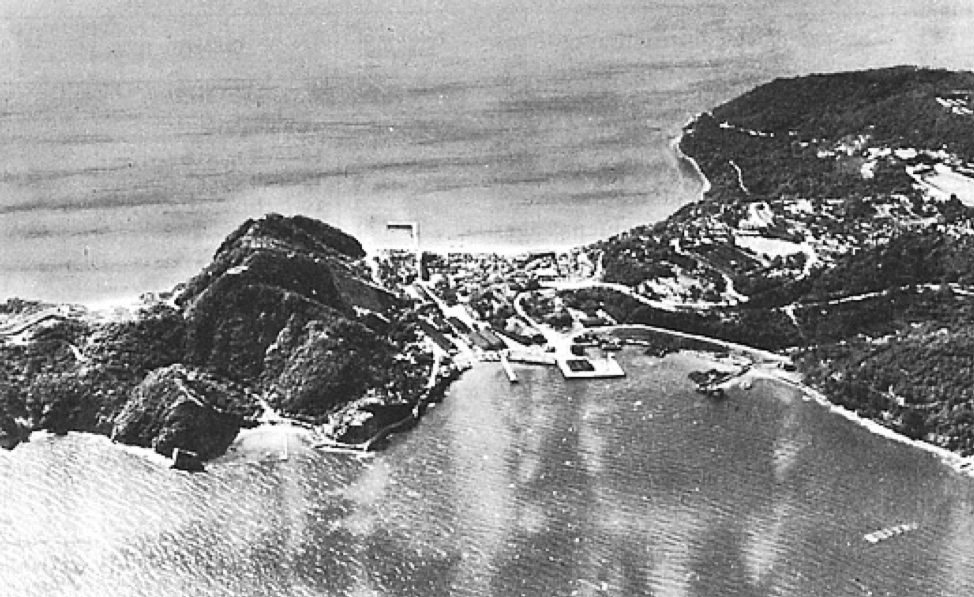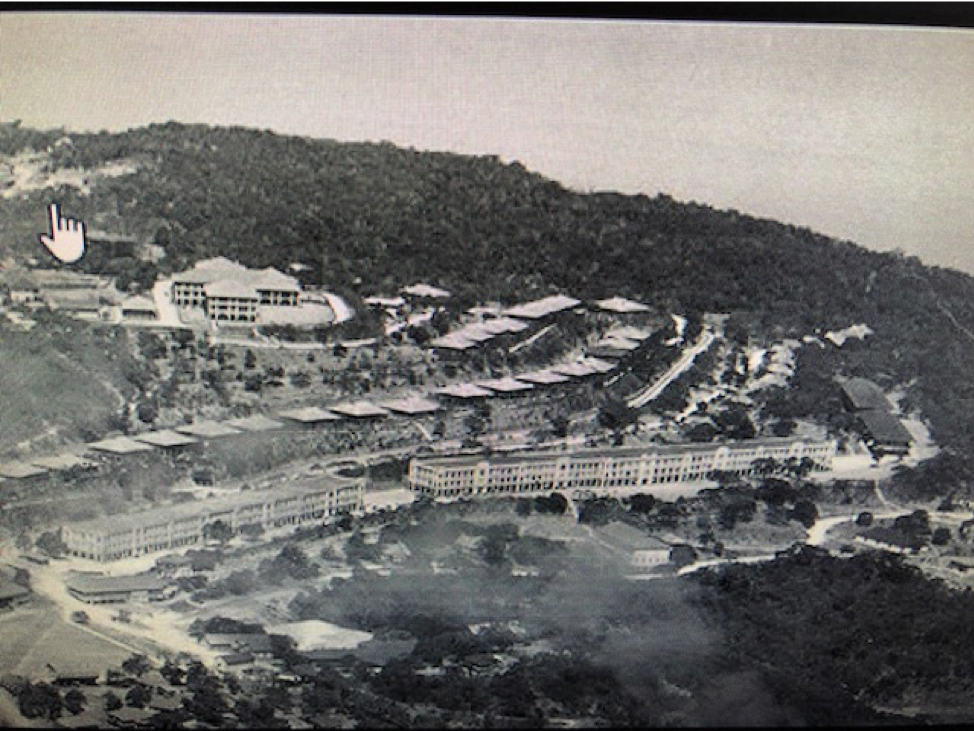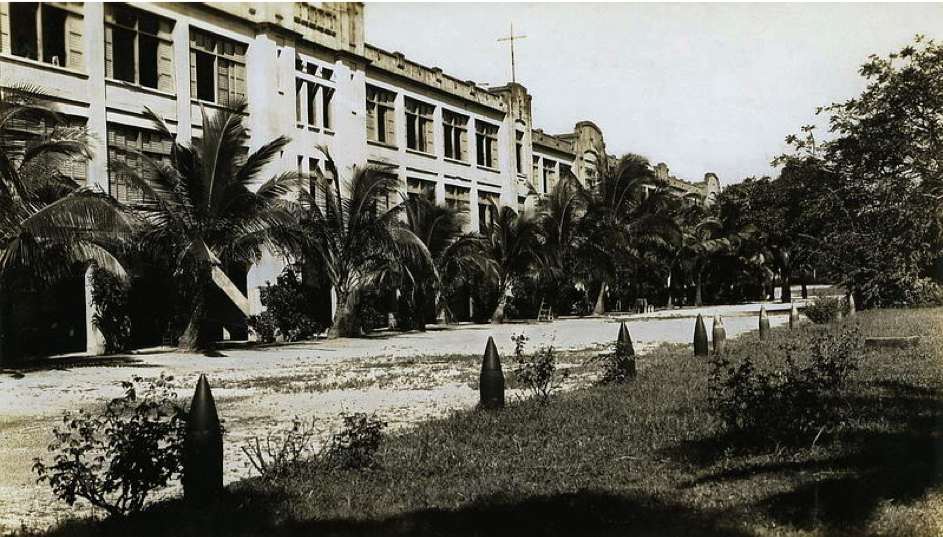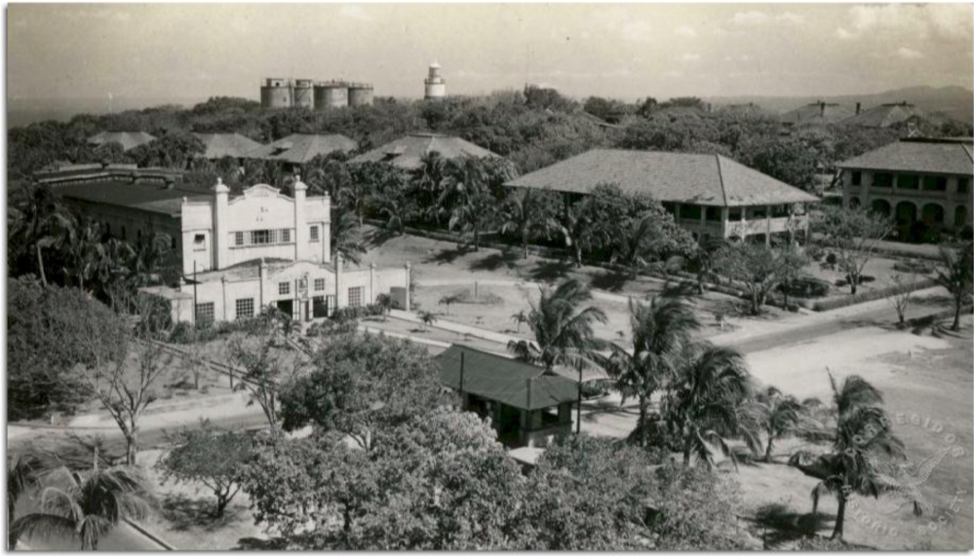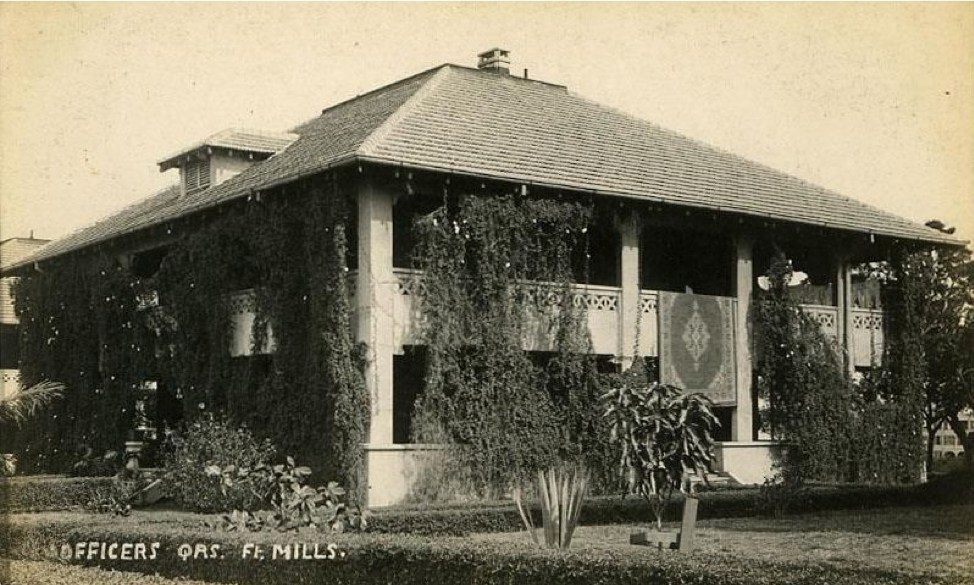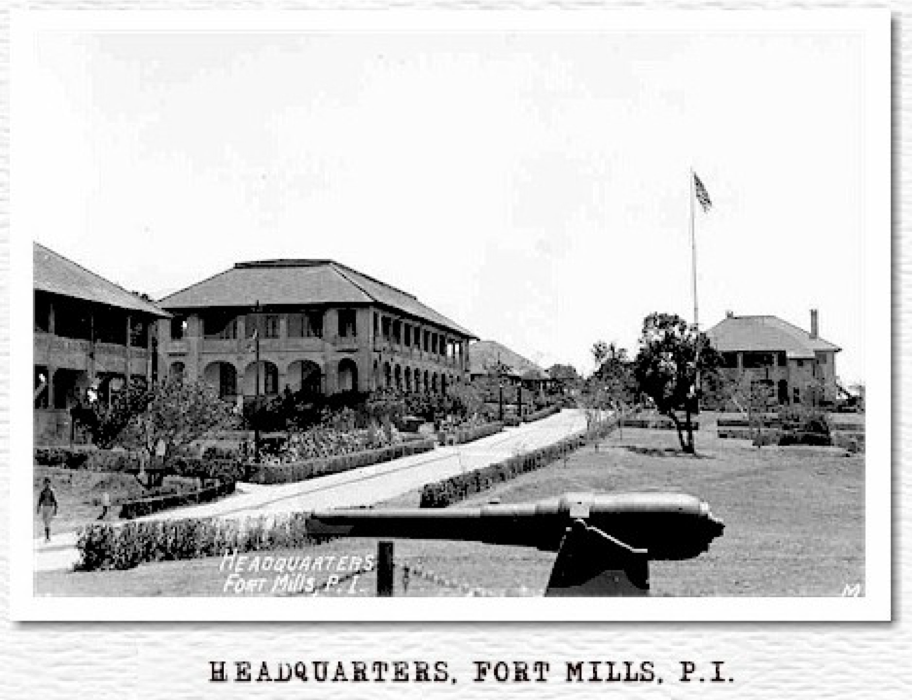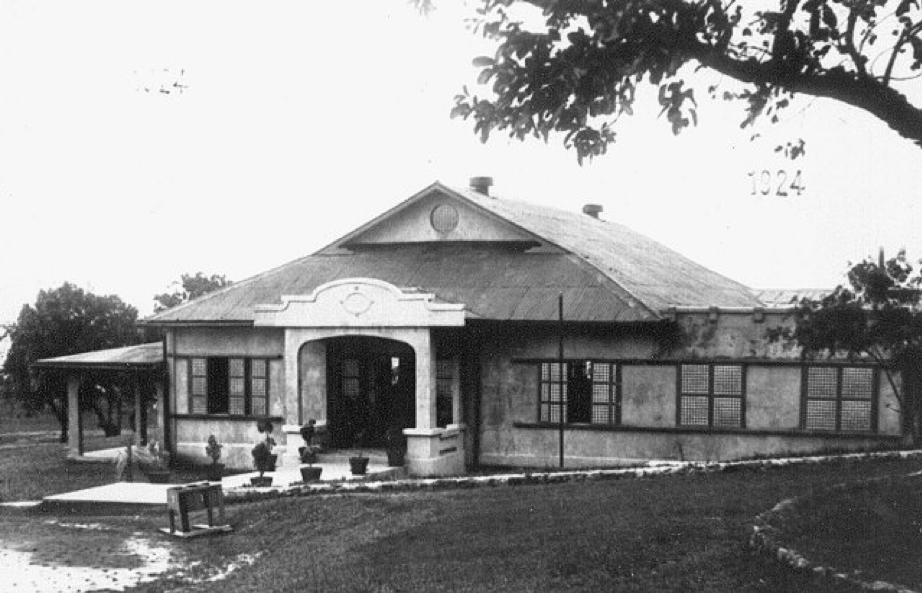(Source: U.S. Army Coast Artillery Journals)
Background: The U.S. Army Coast Artillery Corps (CAC) was established in the early 1900’s. Mission: Protect American cities and harbors from assault from the sea. Major General Arthur Murray was its first Commanding General in 1908. The advent of airpower and long range naval guns spelled obsolesce in the 1920’s and 30’s, despite adding an anti-aircraft role. Most sea coast batteries were open and at risk from attack from the air. When WW2 broke out coastal artillery played almost no role in meeting Japanese attacks on Hawaii, the Philippines and Singapore. Enemy forces came by air. Ground forces attacked from the rear outflanking guns pointing seaward. The CAC was formally considered obsolete by Congress and disbanded in 1942. Units were incorporated into the regular Army.
- Life in the Coast Artillery
CAC was a “spit and polish outfit” formal, neat and clean; unlike the spartan Army Field Infantry. CAC officers and men enjoyed fine quarters surrounded by manicured lawns and gardens; three cooked meals a day; an array of sports facilities and excellent clubs for officers, NCOs and enlisted ranks. They wore crisply pressed khaki uniforms polished riding boots and leather pistol belts. Readers who have visited historic CAC Camps at Fort Monroe (Virginia) or Fort Presidio (San Francisco California) have witnessed a glimpse of pre WW2 CAC life style.
—- CAC in the Philippines
Mission: Protect Manila and Subic Bays from seaward assault. Four CAC Regiments were head quartered on Corregidor Island.
- 59th CA – Heavy Gun Batteries
- 60th CA – Anti-aircraft (AA)
- 91st CA – AA and Heavy Guns
- 92nd CA – 155mm Tractor Drawn Guns
The 59th and 60th were “American Units”
The 91st and 92nd were “Philippine Scout Units” Commanded by Regular U.S. Army Officers.
- Destination Philippines
Officers and Enlisted Men with order to Fort Mills Corregidor began their journeys from Fort Monroe Virginia on the US East Coast or at Fort Presidio, San Francisco on the US West Coast. Tours of duty were two years, but many sought and managed double tours of four years. Journey from the East was 6 weeks via the Panama Canal, San Francisco, Hawaii and Guam.
Journey from the West was four weeks. Most boarded U.S. Army Transports (USATs). USAT Grant and USAT Republic made regular voyagers.
- Life on the Rock
A post report published in the Coast Artillery Journal February 1930 and updated July / August 1932 gives a good description of pre WW2 life on Corregidor. Work was generally half day in the morning, consisting of mandated “Readiness Drills” and exercises. In the afternoon a variety of sports activities were available, evenings at the clubs to dine and dance. On weekend’s boat trips to Manila; shopping at the Escolta and evenings at the Army & Navy Club, Manila Hotel or other social clubs. Other benefits: Ten days “detached service” to visit the Southern Philippine Islands of Mindanao and Jolo. At the end of a tour of duty an up to one month’s leave was granted to officers for visits to China, Japan, French Indo China, Indonesia and British India; an opportunity to buy furniture and household items at bargain prices to be loaded on Army Transports on their way back to San Francisco.
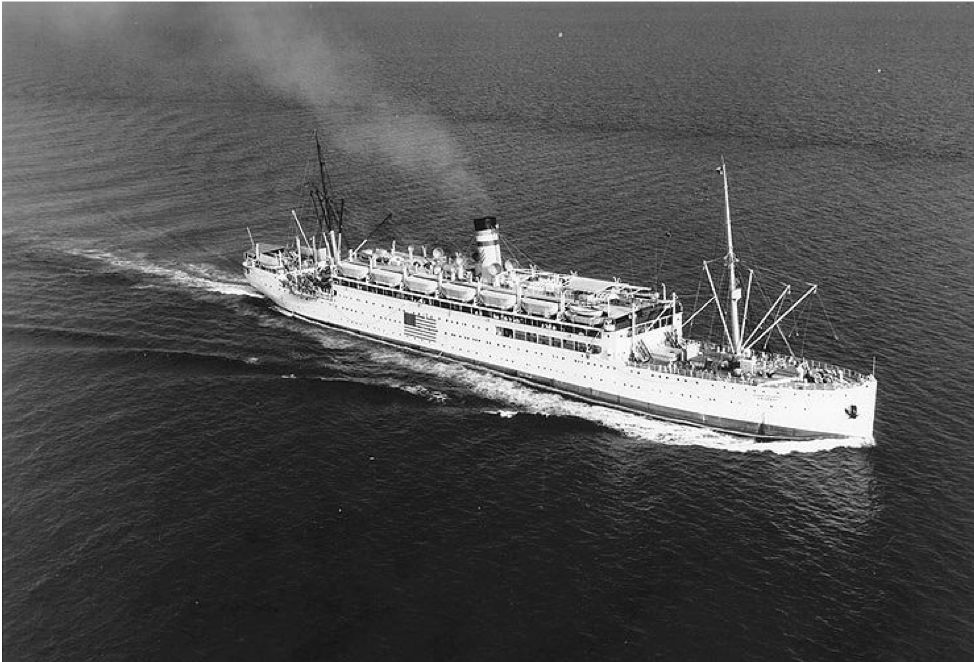
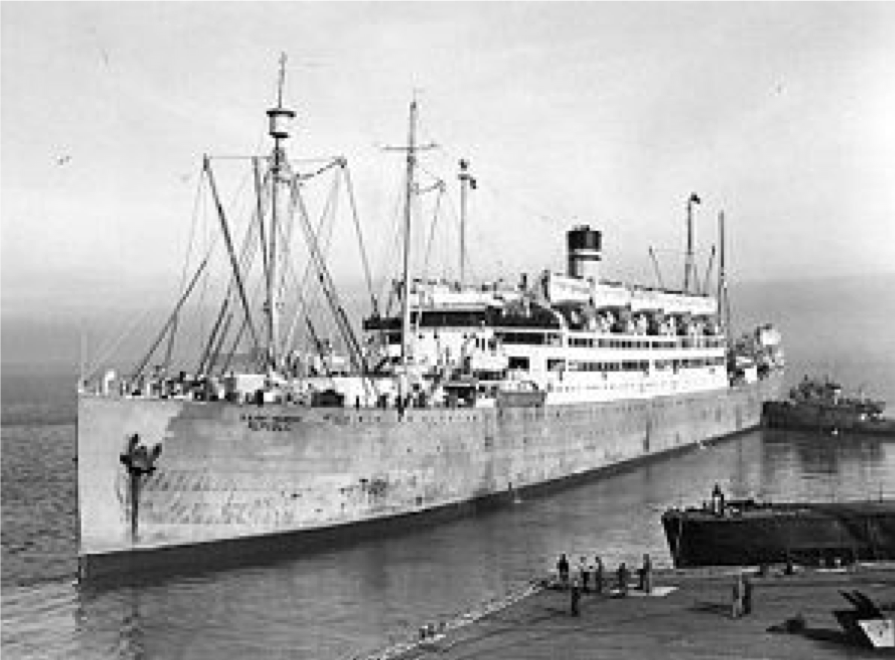
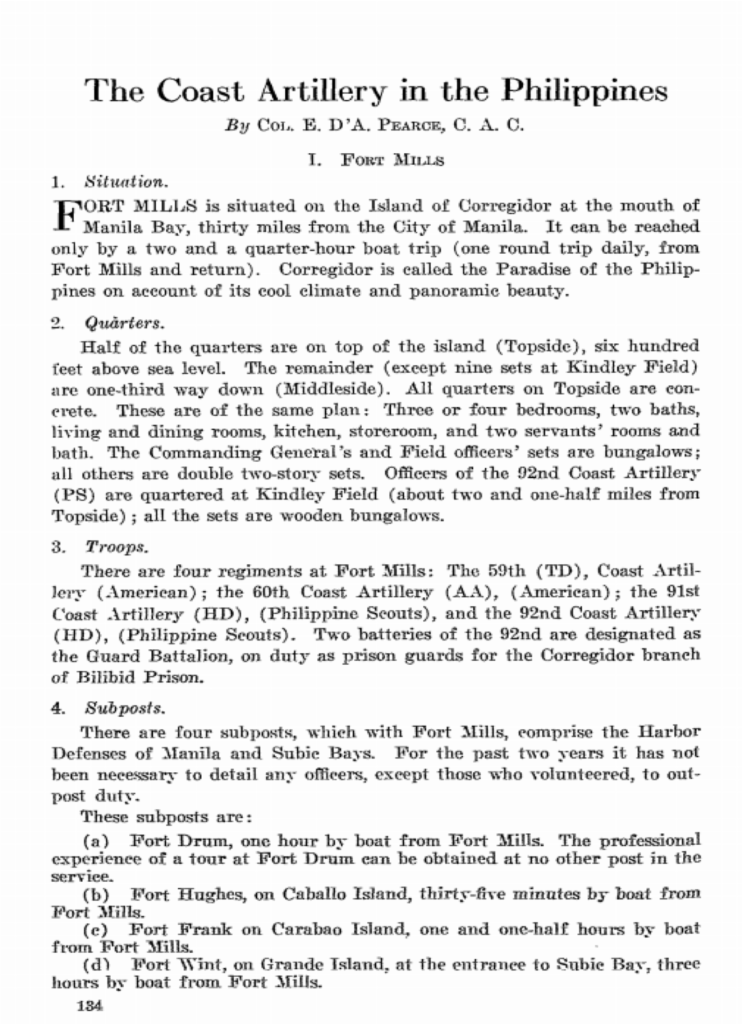
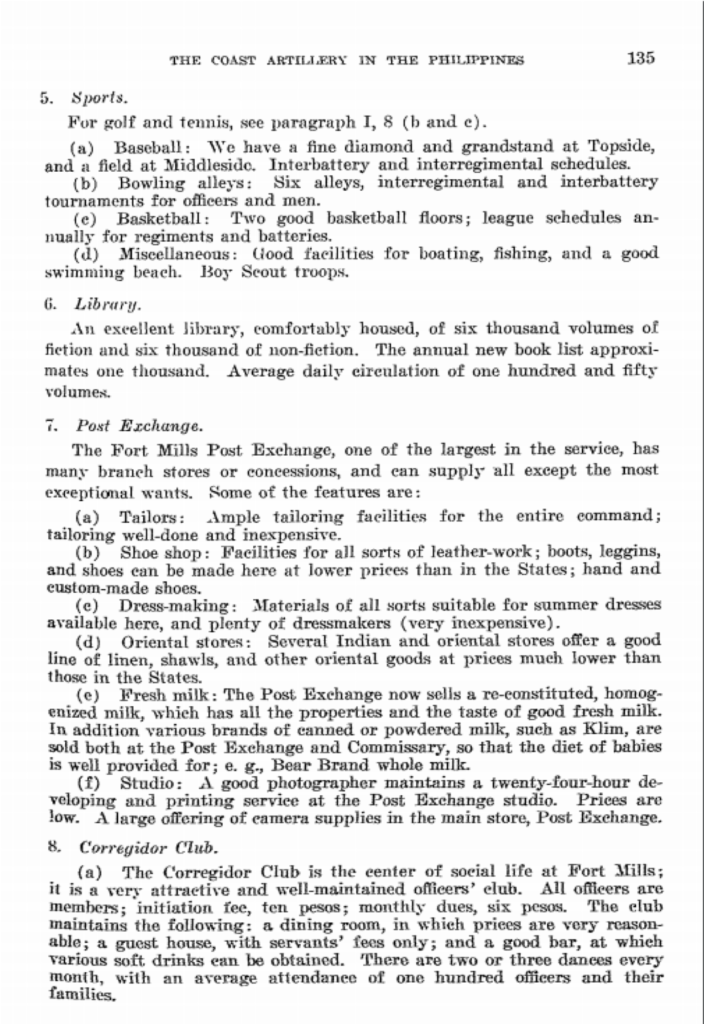
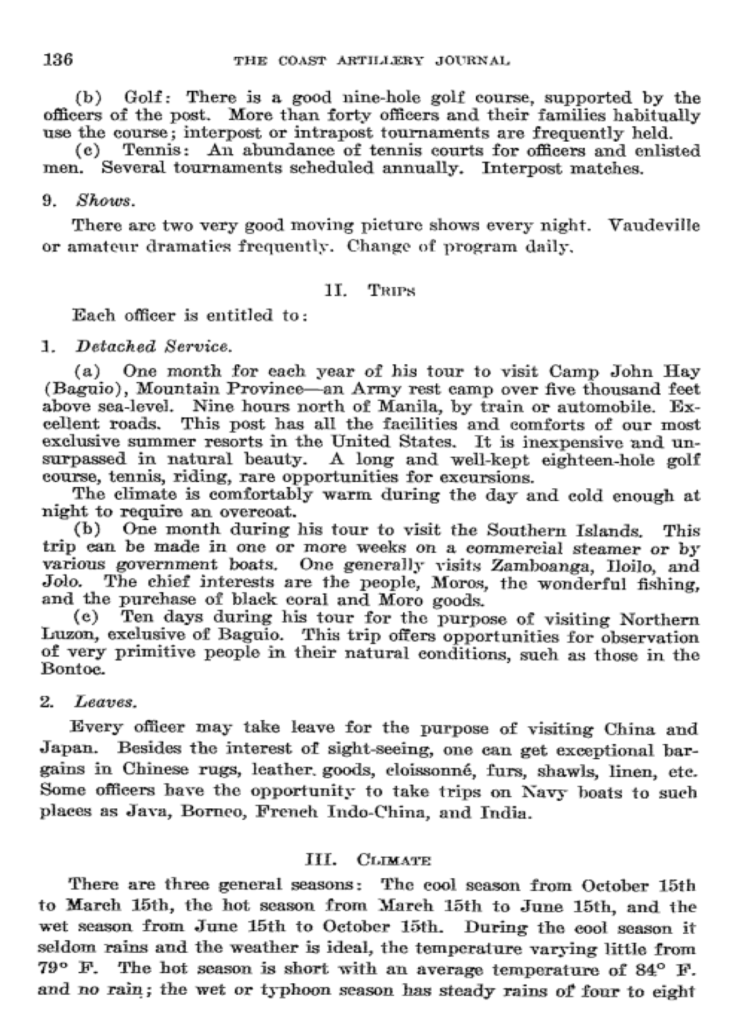




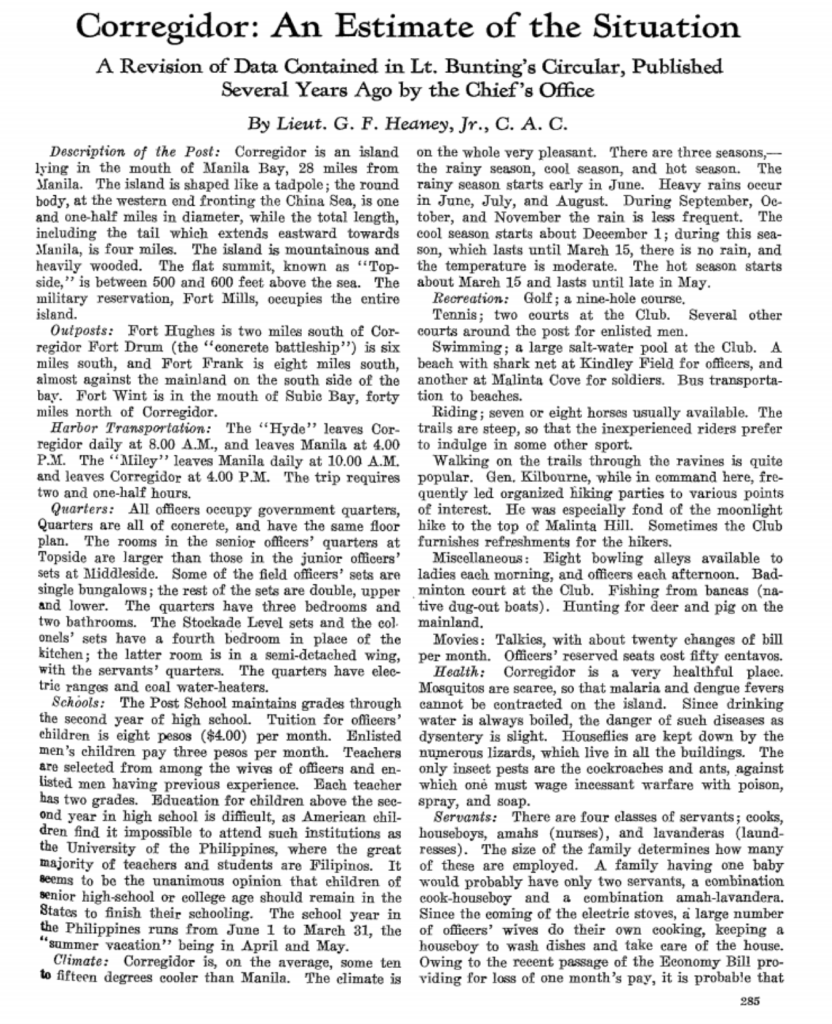
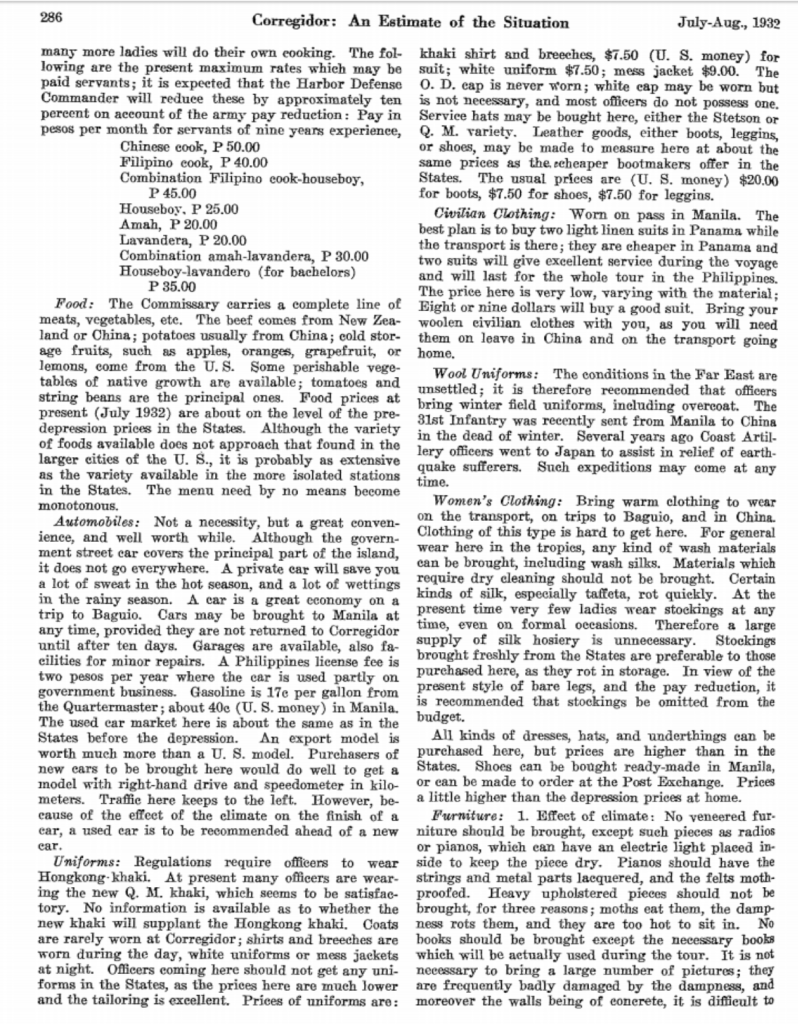

Photos of Pre WW2 Manila Bay Fortified Islands:
